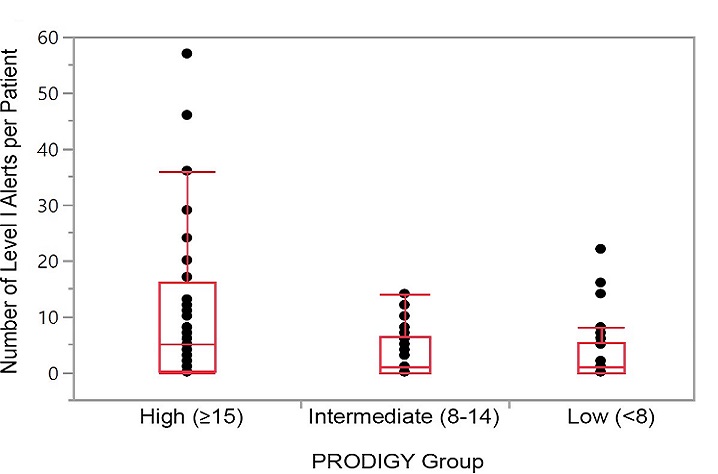PRODIGY score predicts respiratory depression in the post-anesthesia care unit: A post-hoc analysis
DOI:
https://doi.org/10.17305/bb.2024.10585Keywords:
post-anesthesia care unit, PRODIGY score, general care ward, postoperative respiratory depression, respiratory depressive episodesAbstract
Surgical patients who experience respiratory depressive episodes (RDEs) during their post-anesthesia care unit (PACU) admission are at a higher risk of developing subsequent respiratory complications in general care wards. A risk assessment tool for PACU RDEs has not been previously assessed. The PRediction of Opioid-induced respiratory Depression In patients monitored by capnoGraphY (PRODIGY) score is an assessment tool that uses baseline patient variables to categorize patients into low, intermediate, or high risk groups for RDEs in general care wards. This study assessed whether PRODIGY groups are associated with PACU RDEs. This analysis utilized data from a previous observational trial of PACU RDEs detected by capnography. PRODIGY scores were retrospectively calculated, and the number and duration of respiratory alerts were compared among PRODIGY groups. Twenty-six (29.9%) patients were classified as low risk, 29 (33.3%) as intermediate risk, and 32 (36.8%) as high risk. A total of 3,580 alerts were recorded in the PACU, 47% of which were apnea episodes lasting ≥ 10 seconds. The total number and duration of alerts were highest in high risk group patients (median 56 [IQR 12 – 87] alerts per patient vs 22 [9 – 37] in low risk and 26 [13 – 42] in intermediate risk patients, P = 0.035; 303 [123 – 885] seconds vs 177 [30 – 779] in low risk and 301 [168 – 703] in intermediate risk patients, P = 0.042). Poisson regression analysis indicated that the rate of RDEs in the high PRODIGY risk group was higher than in the intermediate (rate ratio estimate = 2.01 [95% CI 1.86 – 2.18], P < 0.001) and low (rate ratio estimate = 2.25 [95% confidence interval 2.07 – 2.45], P < 0.001) risk groups. This analysis suggests that the PRODIGY score may be useful in assessing the risk of PACU RDEs. Trial Registration: https://www.clinicaltrials.gov/ct2/show/NCT02707003
Citations
Downloads

Downloads
Published
Data Availability Statement
All data generated or analyzed during this study are included in this published article and its supplementary information files.
Issue
Section
Categories
License
Copyright (c) 2024 Anuradha Kanaparthi, MD, Frances Chung, MD, FRCPC, Peter R Lichtenthal, MD, Juraj Sprung, MD, PhD, Toby N Weingarten

This work is licensed under a Creative Commons Attribution 4.0 International License.









